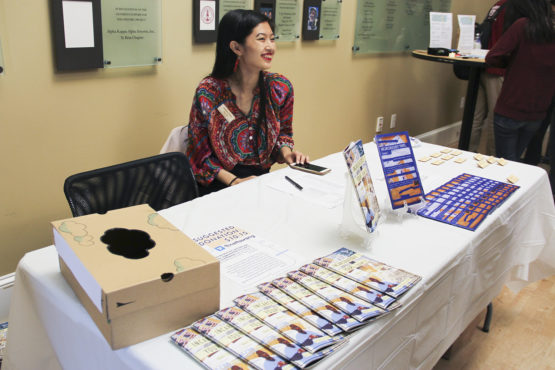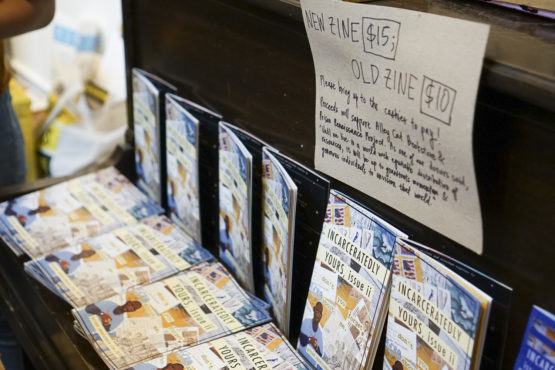New art project brings Stanford students and incarcerated artists together
Incarceratedly Yours is a new collaboration between Stanford students and artists in prison. As part of the project, students and incarcerated artists pair up to create artworks that are then featured in an annual publication.
A sculpture of a surfer riding a rainbow wave, a black-and-white comic strip about friendship and paintings of children’s toys are some of the artworks created as part of a new collaboration between Stanford students and incarcerated artists as a way of connecting the public and people in prison together through art.

A sculpture created as part of the Incarceratedly Yours project. (Image credit: Netta Wang)
Stanford seniors Michelle Chang and Netta Wang launched the art project, called Incarceratedly Yours, in 2017. As part of the project, students and incarcerated artists create artworks together that are then featured in an annual zine – a small, non-commercial magazine. So far, the group published two Incarceratedly Yours zines.
“Our society has sequestered incarcerated people in a way that makes us scared to interact with them,” said Chang, a senior majoring in psychology. “But the fact is they are humans just like we are.”
The project grew from a connection Stanford lecturer Selby Wynn Schwartz made with Emile DeWeaver, who was then an inmate at San Quentin State Prison, during a trip she made to the prison with an artistic ensemble several years ago.
DeWeaver and two other incarcerated men had just established a nonprofit, called Prison Renaissance, to connect incarcerated people to free communities through arts, media and technology. DeWeaver suggested forming a chapter of Prison Renaissance at Stanford, and Schwartz agreed if DeWeaver could help co-direct it. After DeWeaver and Schwartz launched Stanford’s chapter of Prison Renaissance in 2017, Chang and Wang were among the first students to get involved with it.
When Wang and Chang showed up to the first meeting Schwartz gathered, Wang started brainstorming ideas to promote the art and other creative works the group created while talking on the phone to DeWeaver, who was still inside San Quentin at the time.
“It’s not about the poem or the painting at the end of the day,” said Wang, who is majoring in sociology. “Art is a universal language. It’s a vehicle that helps build deep friendships and connections.”
Zines and activism
Chang, who has created zines before, said she and Wang loved the freedom that the format of zines provides.

Former Stanford undergraduate Jessica Chow sits at a table during the launch of the second issue of Incarceratedly Yours. (Image credit: Kevin Riera)
“The process is very grassroots and do-it-yourself-oriented,” Chang said. “We really love the history of zine’s activism roots, such as its ties to the feminism movement.”
With the help of a grant from the Program in Writing and Rhetoric (PWR), Wang and Chang worked with Mesro Coles-El, an incarcerated artist at San Quentin who organized other confined creatives to create the first zine, which was 24 pages long and included four Stanford artists and four incarcerated men from San Quentin.
Chang designed the entire first edition of the zine. She and Wang helped gather Stanford students to participate and arranged phone calls between them and the artists inside San Quentin.
“One of the great things about the zine project is being able to connect with people that I probably would have never been able to connect to, or even see or meet,” Coles-El said.
The finished zine included a short story about multiracial identities and a comic strip about loneliness. It also featured photos of a wooden sculpture that Stanford chemistry PhD student Vince Pane made in collaboration with DeWeaver. Pane carved “We all want to fill ourselves” and other quotes into the wood from a poem DeWeaver wrote.
During his time inside three different prisons, DeWeaver worked on his writing skills before eventually becoming a published writer, with his poetry and essays appearing in magazines and newspapers, including the San Francisco Chronicle and the San Jose Mercury News.
When the second edition of the zine came out in May, DeWeaver had already been out of prison for several months.
“No one is ever confident that they’re gonna get out,” DeWeaver said. “It was really beautiful to meet these people outside of prison walls and be celebrated by them and loved by them – to be in pure delight about the cheesecake they gave me and to see them delighting in my delight.”
Fostering an enduring legacy
To create the second edition, Chang and Wang received another PWR grant and raised around $3,500 through a GoFundMe campaign they created. The pair and Coles-El then gathered a team of 22 Stanford students, including graphic designers and community organizers. The end product was twice as long as the first edition and involved seven Stanford artists and six incarcerated artists.

A display of the second edition of Incarceratedly Yours. (Image credit: Lora Supandi)
The new zine includes a more diverse range of artists, including a transgender incarcerated artist and one new artist who is from the Norco state prison.
For Wang, the project has illuminated a myriad of little things that she has taken for granted. For example, most prisons don’t have clocks, so incarcerated people often don’t know what time it is at any point of the day, which made it challenging for her to connect with prisoners.
In order to talk on the phone, those who are incarcerated have to call the students using a special phone system, which is expensive, Chang said. Because Internet and texting are not allowed inside the prison, many scheduled calls fall through because the incarcerated artists cannot give the students a heads up if they need to reschedule.
“The most rewarding part of the project has been watching the development of these beautiful, meaningful friendships between the students and those on the inside,” Wang said. “There is beauty in all of us, whether we are free or incarcerated.”
To check out the latest Incarceratedly Yours zines, visit Prison Renaissance’s webpage.
In the fall quarter, the artwork featured in the latest zine is scheduled to be displayed in the foyer of the McMurtry Building.

